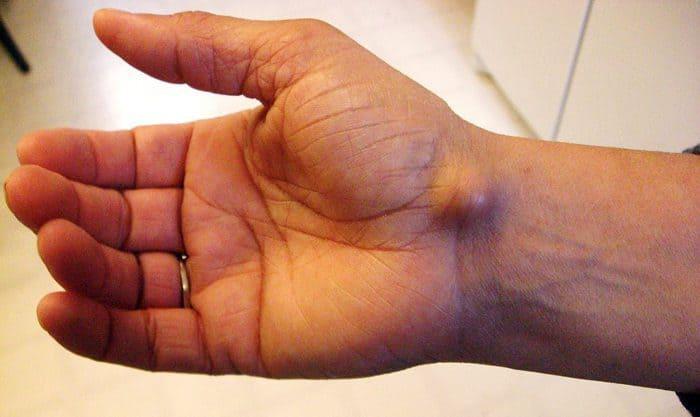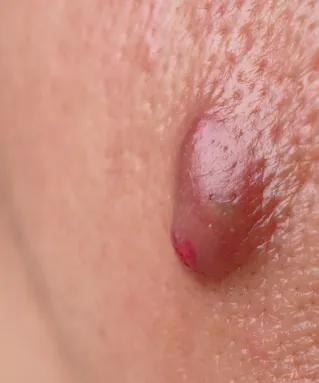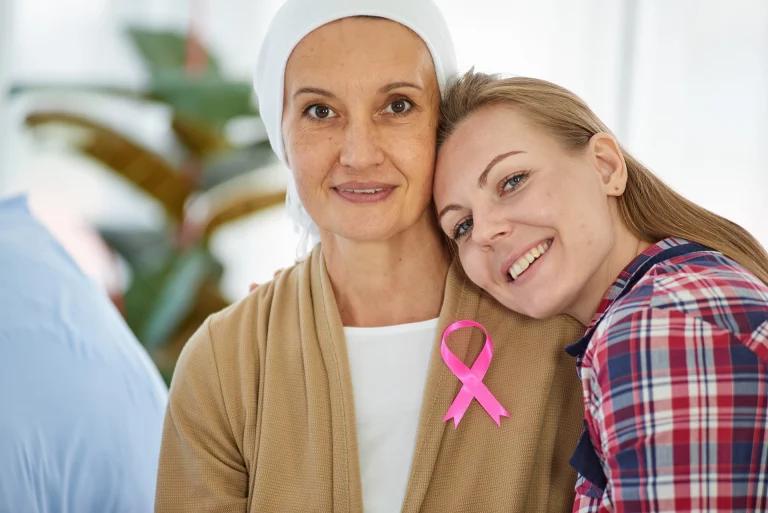When it comes to abnormal growths in the body, it’s important to understand the difference between a cyst and a tumor, and whether or not they can be cancerous. In this comprehensive guide, we will explore the characteristics of cysts and tumors, their potential for malignancy, and the available treatments. So, let’s dive in and shed some light on this topic.
Understanding cysts
What is a cyst?
A cyst is a fluid-filled sac-like structure that can develop in various parts of the body, including bones, organs, and soft tissues. While most cysts are noncancerous (benign cysts), it is important to note that cancer can sometimes cause the formation of a cyst.
Types of cysts
Cysts can manifest in different forms, depending on their location and underlying causes. Here are some common types of cysts:
- Epidermoid cysts (also known as a dermoid cyst or dermal/epidermal inclusion cyst): These cysts develop in the top layer of the skin (epidermis) and are often referred to as sebaceous cysts. They are typically filled with keratin, a protein found in hair and skin cells
- Pilar cysts: Pilar cysts, also known as trichilemmal cysts or sebaceous cysts, form in hair follicles, predominantly on the scalp. They are filled with keratin and can grow to varying sizes
- Ganglion cysts: Ganglion cysts appear as fluid-filled swellings on the wrists, hands, and fingers. They develop near joints or tendons and are often associated with repetitive movements or stress on the affected area
- Baker’s cysts: Baker’s cysts are fluid-filled lumps that form at the back of the knee. They can be a result of underlying conditions such as arthritis or knee joint injuries
- Bartholin’s cysts: Bartholin’s cysts are small, fluid-filled lumps that occur just inside the opening of the vagina. They can cause discomfort and swelling
- Meibomian cysts: Meibomian cysts, also known as chalazions, appear as small lumps or swellings on the eyelid. They are caused by blocked oil glands
Symptoms of cysts
Cysts can vary in size, location, and symptoms. In many cases, cysts are asymptomatic and do not cause any noticeable discomfort. However, if a cyst becomes large or gets infected, it may lead to the following symptoms:
- Swelling or lump under the skin
- Pain or tenderness in the affected area
- Redness or inflammation
- Changes in skin texture or color
- Discharge or fluid drainage from the cyst
It is important to note that the symptoms of a cyst may differ depending on its location in the body.
Diagnosis of cysts
To diagnose a cyst, healthcare providers typically begin with a physical examination and review of the patient’s medical history. They may ask about the duration, growth, and any associated symptoms. In some cases, imaging tests such as ultrasounds, CT scans, or MRI scans may be ordered to visualize the cyst and assess its characteristics.
If there is uncertainty about the nature of the cyst or the possibility of malignancy, a biopsy may be performed. During a biopsy, a small sample of the cyst or surrounding tissue is extracted and examined under a microscope to determine if it is benign or cancerous.
Treatment of cysts
Treatment for cysts depends on various factors, including the type, size, location, and symptoms. In many cases, if a cyst is small, asymptomatic, and does not interfere with daily activities, healthcare providers may recommend a “watchful waiting” approach, where they monitor the cyst over time without immediate intervention.
However, if a cyst becomes painful, infected, or causes significant discomfort, treatment options may include:
- Drainage: For cysts that are filled with fluid or pus, healthcare providers may opt to drain the cyst using a needle or make a small incision to release the contents. This can provide immediate relief and help prevent further complications
- Surgical removal: In some cases, surgical removal of the cyst may be necessary, especially if it is large, causing significant symptoms, or is suspected to be cancerous. The surgical procedure involves excising the cyst and, in some instances, the surrounding tissue to ensure complete removal
- Medication: If a cyst is associated with an underlying condition or infection, healthcare providers may prescribe antibiotics or other medications to address the specific cause and promote healing
Understanding tumors
What is a tumor?
Unlike cysts, tumors also called neoplasms, are abnormal masses or growths that can develop in various tissues throughout the body. Tumors can be either benign or malignant. Benign tumors are noncancerous and do not invade nearby tissues or spread to other parts of the body. Malignant tumors, on the other hand, are cancerous and have the potential to invade nearby tissues and spread (metastasize) to other organs.
Types of Tumors
There are numerous types of cancerous tumors, each with its characteristics and implications. Here are some common types of tumors:
- Adenomas: Adenomas are tumors that originate in the glandular tissues, such as the colon, thyroid, or pituitary gland
- Fibromas: Fibromas are tumors that develop in fibrous connective tissues. They can occur in various locations, including the uterus (uterine fibroids) and skin
- Lipomas: Lipomas are benign tumors composed of fat cells. They typically appear as soft, movable lumps under the skin
- Osteomas: Osteomas are tumors that form in the bones, often in the skull or facial bones
- Leiomyomas: Leiomyomas, also known as uterine fibroids, are benign tumors that develop in the muscular wall of the uterus
Symptoms of tumors
The symptoms of a tumor can vary widely depending on its location, size, and whether it is benign or malignant. Some common symptoms associated with tumors include:
- Swelling or lumps
- Pain or discomfort
- Changes in bowel or bladder habits
- Unexplained weight loss
- Fatigue or weakness
- Changes in skin appearance or texture
It is important to note that while these symptoms may be indicative of a tumor, they can also be caused by other medical conditions. Therefore, a proper diagnosis is crucial.
Diagnosis of tumors
The diagnosis of a tumor often involves a comprehensive evaluation by healthcare providers, including a thorough medical history, physical examination, and imaging tests. Imaging techniques such as X-rays, CT scans, mammograms, MRIs, and ultrasounds can help visualize the tumor and determine its characteristics, such as size, location, and potential involvement of nearby structures.
To confirm the nature of the tumor and whether it is benign or malignant, a biopsy is typically performed. During a biopsy, a small sample of the tumor tissue is obtained and examined under a microscope by a pathologist. This analysis provides crucial information for accurate cancer diagnosis and cancer treatment planning.
Treatment of tumors
If a doctor suspects a tumor, you should be referred to an oncologist for further follow-up. The treatment options for tumors depend on several factors, including the type, size, location, and stage of the tumor, as well as the overall health of the patient. Treatment options for tumors may include:
- Surgical removal: Surgical removal of the tumor is often the primary treatment for both benign and malignant tumors. The goal is to completely excise the tumor while preserving the surrounding healthy tissues. In some cases, minimally invasive techniques or robotic-assisted surgery may be utilized to minimize the invasiveness of the procedure
- Radiation therapy: Radiation therapy involves the use of high-energy X-rays or other radiation sources to target and destroy cancer cells. It can be used as the primary treatment for certain tumors or as adjuvant therapy following surgery to eliminate any remaining cancer cells
- Chemotherapy: Chemotherapy refers to the administration of medications that kill or inhibit the growth of cancer cells. It is commonly used for malignant tumors that have spread to other parts of the body. Chemotherapy can be given orally or intravenously and may be combined with other treatment modalities
- Targeted therapy: Targeted therapy involves the use of drugs or other substances that specifically target cancer cells while minimizing damage to healthy cells. This approach is tailored to the unique characteristics of the tumor, such as specific genetic mutations or molecular markers
- Immunotherapy: Immunotherapy utilizes the body’s immune system to fight cancer cells. It involves the administration of substances that enhance the immune response, enabling the immune system to recognize and destroy tumor cells more effectively
Key differences between tumors and cysts
While tumors and cysts can share similarities, it is essential to understand their fundamental differences. Here are some key distinctions between tumors and cysts:
- Nature: Tumors can be either benign or malignant, while cysts are typically benign. Malignant tumors have the potential to invade nearby tissues and spread to other parts of the body, whereas cysts are generally non-invasive
- Composition: Tumors consist of abnormal cells that proliferate and form a mass, whereas cysts are sac-like structures filled with air, fluid, or other materials
- Growth: Tumors can grow rapidly or slowly, depending on the type and aggressiveness. In contrast, cysts tend to grow slowly and may remain stable for long periods without significant changes in size
- Symptoms: Tumors can cause a range of symptoms, including pain, swelling, changes in bodily functions, and fatigue. Cysts, on the other hand, may be asymptomatic or cause localized symptoms such as pain or discomfort if they become large or infected
- Treatment: The treatment approaches for tumors and cysts differ. Tumors often require more aggressive intervention, such as surgery, radiation therapy, chemotherapy, or targeted therapy, depending on their nature and stage. Cysts may not require treatment unless they cause symptoms or complications, in which case drainage or surgical removal may be considered
Conclusion
In conclusion, differentiating between tumors and cysts is crucial for understanding their implications and guiding appropriate medical management. While tumors can be benign or malignant and require specialized treatment, cysts are typically benign and may not necessitate immediate intervention unless they cause symptoms or complications. If you have any concerns or notice any unusual or new lumps or growths, it is important to consult with a healthcare provider for an accurate diagnosis and appropriate care. Remember, early detection and timely intervention play a vital role in ensuring the best possible outcomes for your health.
Sources
- Tumor vs. cyst: What’s the difference? – Mayo Clinic
- Skin cyst – NHS
- Cancer: MedlinePlus
- Cysts – AOCD
- Benign Soft Tissue Tumors: Types, Symptoms & Treatment
Medical Disclaimer
NowPatient has taken all reasonable steps to ensure that all material is factually accurate, complete, and current. However, the knowledge and experience of a qualified healthcare professional should always be sought after instead of using the information on this page. Before taking any drug, you should always speak to your doctor or another qualified healthcare provider.
The information provided here about medications is subject to change and is not meant to include all uses, precautions, warnings, directions, drug interactions, allergic reactions, or negative effects. The absence of warnings or other information for a particular medication does not imply that the medication or medication combination is appropriate for all patients or for all possible purposes.









